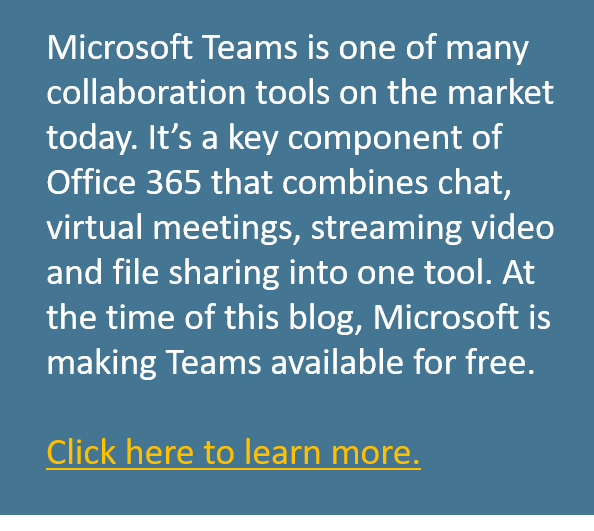Communication
is king
Together,
we are facing an unprecedented global crisis. COVID-19 has changed every single
aspect of our lives. And since this is a business blog, I’ll do my very best to
focus on how it’s changing the way we work.
Communication—without
a doubt—is one of the most important elements to managing a crisis. Whether
you’re disseminating information, or a recipient of the information provided, how
the message is delivered sets the tone for a lot more than you realize.
The reality
How you
handle COVID-19, can make or break employee engagement. The actions you take as
a business today, have the potential to shift your culture forever. The words
your leaders speak can either reflect your company’s values or diminish them altogether.
Here’s
why. Employees are scared (even if they say they aren’t!) because there is so
much we don’t know. Also, they’re not just your employees. They are wives,
husbands, parents, children, caregivers and maybe even patients.
But
why?
As an
employer, you need to do everything you can diminish uncertainty in this
uncertain world. You must communicate what you know, and how it impacts your
business with sensitivity.
Explain
what it means to every employee and outline your expectations of them. Address
any changes you’re making to deadlines, compensation or policies (i.e. work
from home). Give them specific calls to action. Whatever you do, do not leave
them guessing.
With that
said, focus on the facts related only to your business. Do not comment or
speculate on what will happen in the future—leave that to the experts. Refer
employees to reputable outside resources for the things not in your immediate
control. For example, link to tips and information on COVID-19 from the World Health Organization
or Centers for Disease Control and Prevention
(if
you’re in the United States).
When and
how often you communicate with employees is entirely up to you. You know your
business—and employees—better than anyone else. But when things are changing by
the minute, overcommunicating is better than not communicating at all.
Creating
a great experience
In times
of crisis, great leaders—and companies—emerge. Clear, consistent and frequent
communication is vital. To recap thus far, don’t leave employees guessing.
Don’t leave room for uncertainty. Use this moment in time to solidify who you
are as a company.
After you
determine what you’ll communicate and how often, think about how you will
communicate. Yes, the mechanics matter. My advice is to use whatever communications
channel—email, messaging platform or enterprise social networking—you use every
day. That’s where employees will be looking for your messages. But it’s also
important to consider the overall employee experience you want to create.
So much
of communication is nonverbal. Body language and facial expressions matter.
They increase understanding and establish a better perspective of what the message
means for the viewer. That’s exactly why video is emerging as the most
effective way to communicate when you can’t meet in person.
In fact, a recent Wainhouse Research survey found 82% of those surveyed described video as an effective tool for communicating work-related information.1
Here’s a
little more food for thought. With more and more people working from home right
now, they might feel isolated or disconnected. Video is one way you can keep
employees engaged and connected. So, if you’re not already using video, it is
something you should consider.
Companies
like Microsoft
have made it easier than ever to record, share and watch videos. It’s as easy
as using your computer’s camera to record a message you can send to employees.
And for today, that’s exactly what you might need to do—from your home office.
Distributing
the video
Let’s go
one step beyond why, when and how you should communicate. If you use video to
deliver business communications or employee training, you need to consider how
it might impact your network.
But this
is where it gets tricky. Today, many of us are working from home. As a result,
we’re probably not using the corporate network. We’re using the public
internet.
When
everyone is in the office—or your employees are at your place of business out
of necessity—it’s a different situation altogether. High-quality video eats up
a lot of bandwidth, and most corporate networks aren’t sized to handle it. The
more you scale, the more your network becomes stressed.
To help
paint a picture, it takes approximately 20,000 mbps of bandwidth to webcast to
10,000 people.2 Just imagine what that would do to your network (and
the rest of your business applications). All of a sudden, your network has to
handle 20,000 mbps extra data. Everything slows like a busy highway during rush
hour.

For
example, let’s talk about what’s happening at medical facilities today. The
COVID-19 situation is changing by the hour, and leaders need to keep medical
staff up to date. Just imagine what could happen during a shift change at a
large hospital group. Everyone logs in and watches a video message from the
head of infectious diseases at the same time. All of a sudden, massive amounts
of data are travelling the network, slowing down access to critical systems
such as electronic health records.
An
enterprise content delivery network (eCDN) can minimize network congestion
created by both live and on-demand video. By managing video distribution behind
the firewall, you protect your business operations while delivering an
uninterrupted, glitch-free experience to the people watching.
Read more
about Ramp’s eCDN software here
or contact us for a free consultation
to assess your video network
.
A
final word
Thank you to everyone who is on the front lines caring for others and working tirelessly to stop the spread of COVAD-19. We know you’re making a sacrifice to keep us safe, and we hold you in the highest regard.
2 For
this calculation, we’re assuming one video stream is equal to 2mbps.
The post Employee Communication
During a Crisis
appeared first on Ramp
.


